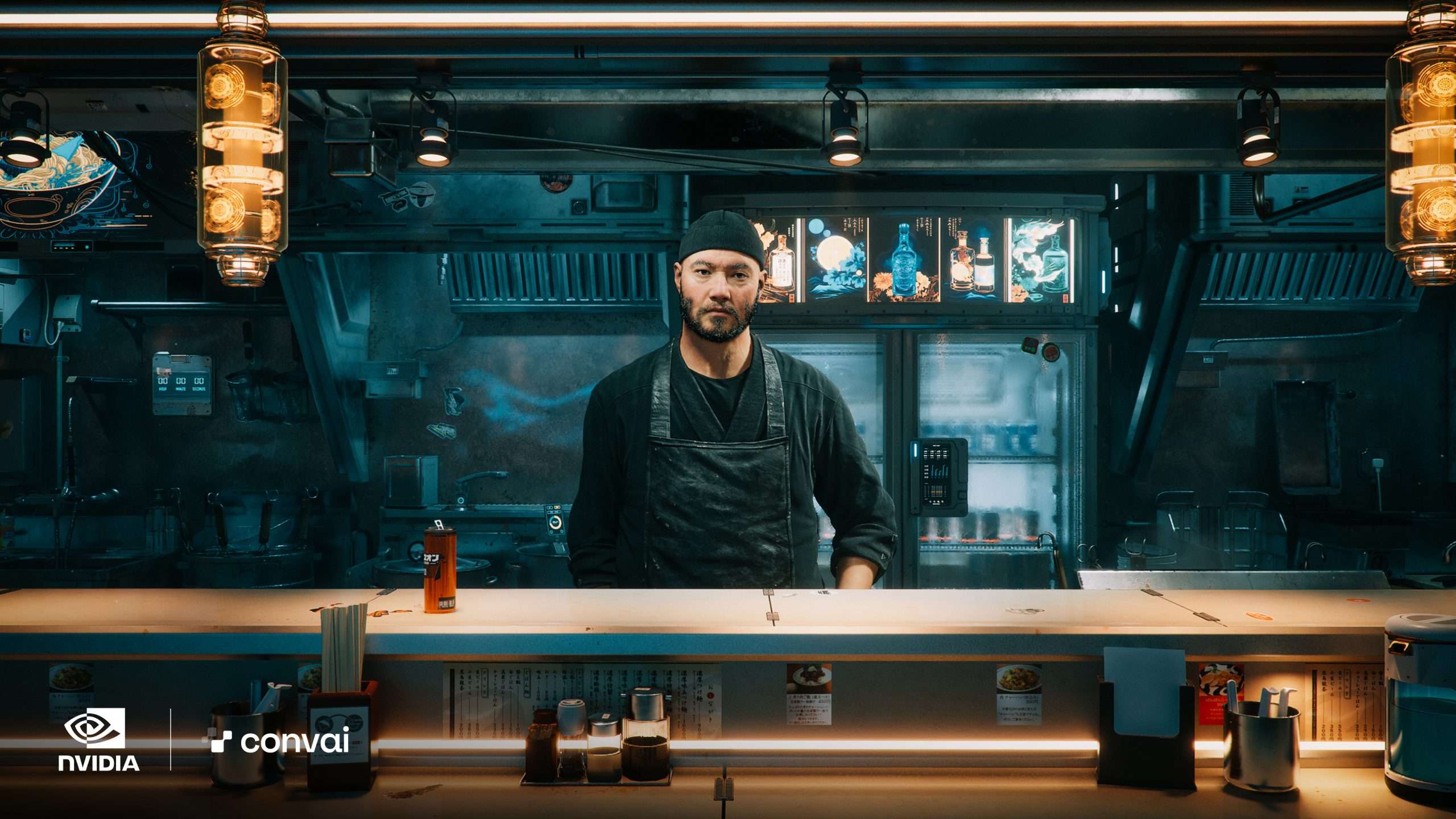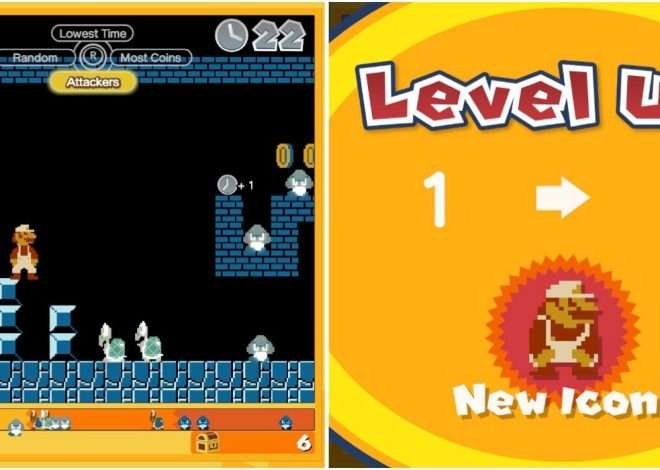
Nvidia’s AI NPCs: Revolutionizing Gameplay and Immersion
For a long time‚ I remained skeptical about the practical applications of artificial intelligence within the gaming world‚ especially when it came to non-player characters (NPCs). I envisioned clunky interactions‚ repetitive dialogue‚ and an overall experience that would detract from‚ rather than enhance‚ immersion. However‚ recent advancements spearheaded by Nvidia are forcing me to reassess my perspective. The potential for AI-driven NPCs to revolutionize gameplay‚ narrative‚ and world-building is becoming increasingly apparent‚ and it’s something the industry needs to pay close attention to. This shift represents not just a technological leap‚ but a fundamental change in how we interact with virtual worlds.
The Initial Skepticism: A History of Unsatisfying NPCs
My initial skepticism stemmed from years of experiencing underwhelming NPCs in video games. From the endlessly repeating guards in classic RPGs to the stilted conversations in more modern titles‚ NPCs have often felt like programmed automatons rather than believable inhabitants of their respective worlds. This lack of dynamism and realism has consistently broken immersion and limited the potential for truly engaging player interactions. The promise of AI-powered NPCs always seemed like a distant dream‚ perpetually hampered by technological limitations.
The Limitations of Traditional NPC Design
Traditional NPC design relies heavily on pre-scripted dialogue and behaviors. Developers meticulously craft branching conversation trees and trigger specific actions based on player input. This approach‚ while effective to a certain extent‚ is inherently limited by its static nature. NPCs can only react in pre-determined ways‚ leading to predictable and often unsatisfying interactions. These limitations manifest in several key areas:
- Repetitive Dialogue: NPCs often repeat the same lines of dialogue ad nauseam‚ regardless of the context or player actions.
- Lack of Contextual Awareness: NPCs fail to acknowledge significant events or changes in the game world‚ further diminishing their believability.
- Unrealistic Behavior: NPCs often exhibit illogical or inconsistent behavior‚ further detracting from the overall immersion.
- Limited Interactivity: Player interactions are restricted to pre-defined conversation options‚ limiting the scope for meaningful engagement.
Nvidia’s AI Revolution: A Paradigm Shift
Nvidia’s foray into AI-driven NPCs represents a significant departure from traditional design paradigms. By leveraging advanced machine learning algorithms and powerful GPU processing‚ Nvidia is creating NPCs that are capable of dynamic dialogue‚ contextual awareness‚ and believable behavior. This paradigm shift has the potential to transform the gaming landscape‚ creating more immersive and engaging experiences for players.
How Nvidia’s AI NPCs Work
Nvidia’s AI NPC technology utilizes a complex interplay of various AI models‚ each responsible for different aspects of NPC behavior. These models are trained on vast datasets of text‚ speech‚ and animation‚ allowing them to generate realistic and nuanced responses. The key components of this technology include:
- Natural Language Processing (NLP): NLP models enable NPCs to understand and respond to player input in natural language‚ rather than relying on pre-scripted keywords.
- Text-to-Speech (TTS): TTS technology allows NPCs to generate realistic and expressive speech‚ enhancing the sense of immersion.
- Facial Animation: AI-driven facial animation allows NPCs to convey emotions and respond to player interactions in a believable manner.
- Behavioral Modeling: Behavioral models allow NPCs to exhibit realistic and contextual behavior‚ reacting to events and player actions in a dynamic way.
The Impact on Gameplay
The potential impact of Nvidia’s AI NPCs on gameplay is immense. Imagine interacting with characters who can genuinely understand and respond to your questions‚ who remember your past actions‚ and who react to the changing circumstances of the game world. This level of dynamism and realism would fundamentally alter the player experience‚ creating more immersive and engaging narratives.
Enhanced Immersion
AI NPCs can dramatically enhance immersion by creating a more believable and dynamic game world. Their ability to respond to player input in a natural and contextual way makes them feel more like living‚ breathing characters. This enhanced immersion can lead to a deeper connection with the game world and a more rewarding overall experience.
Dynamic Storytelling
AI NPCs can also facilitate dynamic storytelling‚ allowing players to shape the narrative through their interactions with the game world. The choices you make and the relationships you forge with NPCs can have a real impact on the story‚ creating a more personalized and engaging experience; This level of narrative flexibility is simply not possible with traditional NPC design.
Emergent Gameplay
The dynamic and unpredictable nature of AI NPCs can also lead to emergent gameplay‚ where unexpected and unscripted events occur as a result of player interactions. This can create unique and memorable experiences that would not be possible with traditional game design. The possibilities are truly endless.
Beyond Dialogue: The Broader Implications
The impact of Nvidia’s AI NPCs extends far beyond just dialogue. These technologies can be used to create more realistic and engaging environments‚ improve enemy AI‚ and even generate entire game worlds. The potential applications are vast and far-reaching.
Realistic Environments
AI can be used to create more realistic and dynamic environments‚ populating the game world with intelligent creatures and NPCs that behave in a believable manner. This can create a more immersive and engaging experience for players‚ making them feel like they are truly inhabiting a living‚ breathing world. Imagine towns that react to the player’s presence‚ changing and evolving based on their actions.
Improved Enemy AI
AI can also be used to improve enemy AI‚ creating more challenging and unpredictable opponents. Enemies can learn from player behavior‚ adapt to their tactics‚ and even coordinate their attacks. This can make combat encounters more engaging and rewarding‚ forcing players to think strategically and adapt to the changing circumstances.
Procedural World Generation
AI can even be used to generate entire game worlds‚ creating vast and detailed environments with minimal human intervention. This can significantly reduce the development time and cost of creating large open-world games‚ allowing developers to focus on other aspects of the game design.
Challenges and Considerations
While the potential benefits of Nvidia’s AI NPCs are undeniable‚ there are also several challenges and considerations that need to be addressed. These include the ethical implications of AI‚ the potential for bias in AI models‚ and the need for responsible development practices.
Ethical Considerations
The use of AI in video games raises several ethical considerations. It’s crucial to ensure that AI NPCs are not used to exploit or manipulate players‚ and that they are designed in a way that promotes fairness and inclusivity. Developers need to be mindful of the potential impact of AI on player behavior and ensure that their games are not contributing to harmful stereotypes or biases.
Bias in AI Models
AI models are trained on vast datasets of text‚ speech‚ and animation. If these datasets contain biases‚ the AI models will inevitably reflect those biases. This can lead to AI NPCs that exhibit discriminatory or offensive behavior. It’s crucial to carefully curate the training data used to develop AI NPCs and to actively mitigate any potential biases.
Responsible Development Practices
Responsible development practices are essential for ensuring that AI NPCs are used in a way that benefits players and society as a whole. Developers need to be transparent about how AI is being used in their games‚ and they need to be accountable for the behavior of their AI NPCs. It’s also important to involve players in the development process‚ soliciting feedback and addressing any concerns that they may have.
The Future of Gaming: A World Populated by Intelligent NPCs
Nvidia’s AI NPCs represent a major step forward in the evolution of video games. While challenges remain‚ the potential for these technologies to transform the gaming landscape is undeniable. As AI continues to advance‚ we can expect to see even more sophisticated and engaging NPCs‚ blurring the lines between the virtual and the real.
The Convergence of AI and Gaming
The convergence of AI and gaming is accelerating‚ driven by advancements in machine learning‚ GPU processing‚ and natural language processing. This convergence is leading to new and innovative gameplay experiences that were previously unimaginable; We are only beginning to scratch the surface of what is possible.
A More Immersive Future
The future of gaming is one where players are fully immersed in dynamic and responsive worlds‚ populated by intelligent NPCs that can think‚ learn‚ and adapt. This future is closer than ever‚ thanks to the pioneering work of companies like Nvidia. The implications for entertainment‚ education‚ and even social interaction are profound.
Transformative Potential
The transformative potential of AI NPCs extends far beyond just video games. These technologies could be used in virtual training simulations‚ interactive storytelling‚ and even social robots. The applications are limited only by our imagination.
My initial skepticism regarding AI NPCs stemmed from past experiences with lackluster implementations. However‚ Nvidia’s advancements have opened my eyes to the transformative potential of this technology. The ability to create dynamic‚ responsive‚ and truly believable NPCs is poised to revolutionize the gaming landscape. This represents not just a technological advancement‚ but a fundamental shift in how we interact with and experience virtual worlds. The future of gaming is undoubtedly intertwined with the continued development and integration of AI.



